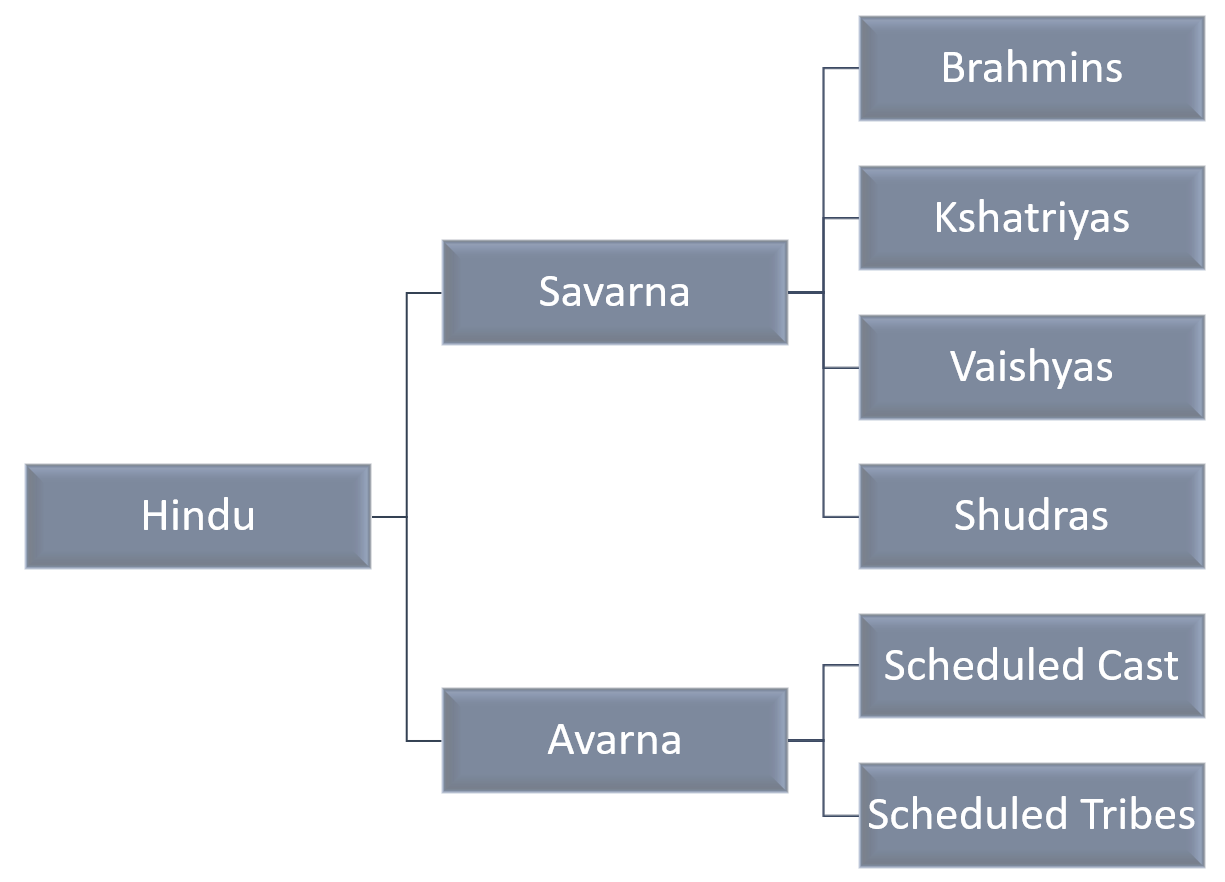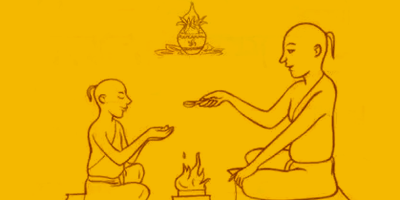Beginning of The Caste System (Varna)
Indian culture is one of the richest cultures in the world. At an early age or in history Indian Hindus were divided into 4 categories called Varna
- Brahmins
- Kshatriyas
- Vaishyas
- Shudras
We can say this is the beginning of the official caste system for Hindus. There are many texts like Manusmriti, Dharmashastra, Vedas etc. where a description of the rank of four varans is available.
Communities are developed per people's work and cultures, and those communities that belong to one of four Varana as per their fit are called Savarna Hindu. The Dalits and Tribes who do not belong to these varnas are called Avarna.
All four social classes (without using the word Varna) appeared in the Rigvedic Purusha Sukta that is Brahmins, Rajanya (Kshatriya), Vaishyas and Shudras.
when Purusha divided into portions
- The Brahmins was his mouth
- Both arms were the Rajanya (Kshatriya)
- His thighs become Vaishyas
- From his feets the Sudras produced
Varna is divided among people and community as there works
- Brahmins: Priest, Teachers, Academics etc.
- Kshatriyas: King, Warriors
- Vaishyas: Merchants, Landowners etc.
- Sudras: Commoners, Peasants, Servants etc.
Many ideologists believe the Rigvedic society was not organised based on a social division it can be a myth.
Many believe in the post-Vedic period, the division is described in the Dharmashastra literature, the Mahabharata and in the Puranas.
The Dharmashastras
The Varnas system is extensively described in the Dharmashastras. This Varna is divided into four Varnas (Brahmins, Kshatriya, Vaishya and Sudras). Those who fall out of this system because of their grievous sins become outcastes (untouchables) and considered outside of the Varna system. Those who are unrighteous or unethical are also considered outcasts.
Some scholars and professors have suggested the lack of resemblance between India's ancient and modern era caste systems.
Patrik Olivelle, a professor of Sanskrit and Indian Religions and credited with modern translations of Vedic literature. States that the Dharma-Sutra and Dharma-Shastra in ancient and medieval Indian texts do not support ritual pollution, purity-impurity as the basis of the Varna system, but in the context of individual's moral, rituals and biological pollution (like eating meets). Massive focus on matters relating to purity/impurity in the Varna. Whereas all four Varnas could carry purity/impurity by the content of their character, ethical intent, actions, innocence or ignorance, stipulations, and ritualistic behaviours.
" in ancient and medieval Indian texts do not support ritual pollution, purity-impurity as the basis of Varna system "
The first three Varnas are described in the Dharmashastras as "twice-born" and they were allowed to study the Vedas. Such restrictions were not found in Vedic-era literature.
" Restriction of who can study Vedas is not found in Vedic-era Literature "



